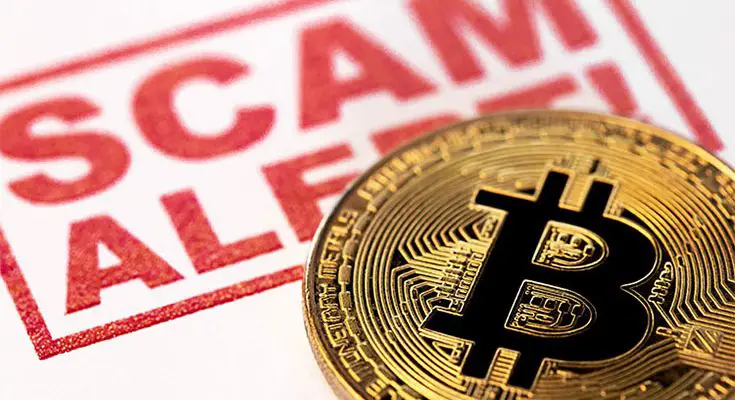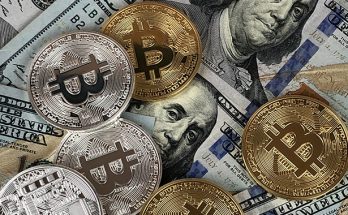Table of Contents
Imagine buying a painting for €1,000 and declaring that the entire collection of the artist (100 works still in their studio) is automatically worth €100,000. Absurd, right? Yet, this is exactly what happened when the media, about ten days ago, announced that Donald Trump had become a "crypto-billionaire" thanks to his memecoin $TRUMP.
When Donald Trump launched his memecoin, many Italian (and international) newspapers rushed to publish sensationalist headlines with astronomical figures. Some outlets claimed that the total value of the $TRUMP token was $30 billion, a figure that would have surpassed much of his personal wealth. However, these numbers are based on a highly questionable calculation method. In this article, we will try to clarify this aspect, highlighting the evident logical fallacy behind such claims.
The "Market Cap" Scam
The mechanism, as simple as it is deceptive, is based on a genuine logical fallacy structured in the following points:
- Initial price. The first tokens are traded at $50 on an unreliable platform.
- Market cap. That price is multiplied by all the tokens currently in existence (200 million), thus calculating a "market capitalization" of $10 billion.
- Fully Diluted Shares. It is assumed that a billion future tokens (to be released over three years) are worth $50 each today, reaching the surreal figure of $50 billion.
This cascading reasoning hides three conceptual deceptions, each characterized by a deliberate intent to manipulate. Let's analyze them point by point, highlighting for each the logical fallacy, the reality being hidden, and the fraudulent intent aimed at deceiving the final investor.
1. The Initial Price: A Market Illusion
- Logical Fallacy: Assuming that the price of a single token traded on an illiquid platform (often through suspicious transactions or wash trading) represents its "real value." This is especially true if these prices result from trades between wallets controlled by the same creators: in that case, the price is blatantly artificial and "constructed," in no way representative of a real market. It is like auctioning a car to yourself for $1 million and then, based on that transaction, claiming that the entire car lot of your dealership is worth $100 million.
- Reality: In illiquid markets, price is an irrelevant snapshot. Without real buyers willing to sustain that level for large quantities, the value is fictitious.
- Fraudulent Intent: Creating an aura of legitimacy. Promoters choose platforms with low regulations, where it is easy to manipulate prices, to generate eye-catching headlines and attract FOMO (Fear Of Missing Out).
2. Market Cap: A Baseless Extrapolation
- Logical Fallacy: Applying the price X circulating supply formula—valid for real stocks (where each share represents a stake in a company with tangible assets)—to tokens with no utility, underlying assets, or organic demand. For example, claiming that 200 million tokens "are worth" €10 billion while skillfully overlooking the fact that there are no buyers willing to pay €50 for each of those tokens. In practice, as any industry expert knows, attempting to sell even just 5% of those tokens would cause the price to collapse (slippage effect).
- Reality: The market cap of any cryptocurrency is a theoretical notation and can never be considered a real measure of value.
- Fraudulent Intent: Artificially inflating the perception of the project. Declaring that there is a "$10 billion market cap" means attracting media, influencers, and small investors, convinced they are entering a "hot market," unaware that 95% of those "billions" do not actually exist. On the contrary, as demonstrated by the 80% collapse of Shiba Inu in 2022, these numbers are houses of cards ready to crumble at the first gust of skepticism.
"It is like valuing a car by multiplying the price of a single part by all the components in the entire production chain," comments Laura Bianchi, an expert in decentralized finance. "If the price crashes tomorrow, those ‘billions’ evaporate. Yet, newspaper headlines treat them as if they were cash in the bank."
- Logical Fallacy: Assuming that future tokens (here: 1 billion over 3 years) can be valued at the current price, violating every basic economic principle. In this specific case, it is assumed that, by adding an additional 800 million tokens to the existing 200 million today, supply will remain unchanged. Obviously, any market expert knows that, all else being equal, the price could only plummet (law of supply and demand): what actually happens is that promoters present numbers as if demand and price will magically remain stable.
- Reality: Fully diluted valuation is a fanciful projection, useful only for justifying hyperbolic headlines ("Trump becomes a crypto-billionaire!").
- Fraudulent Intent: Creating the illusion of inevitable exponential growth. The intent is to lead new investors, unaware of market dynamics, to interpret those numbers as a "guarantee" of future profits, without understanding that additional tokens will be used to dilute value and enrich insiders.
"The ‘fully diluted valuation’ is an accounting trick," explains financial analyst Gianluca Moro. "It is as if a company valued its future revenues for the next 10 years based on yesterday’s sales. In the real world, it would be fraud, but in the speculative bubble of cryptocurrencies, it is considered marketing."
The Role of the Media
The issue is not just technical but cultural: dozens of reputable newspapers have reported figures derived from this logical fallacy without contextualizing them, fueling two dangerous illusions:
- Illusion of Liquidity: It is assumed that if 100 tokens were traded at $50, 10 million tokens could reasonably be sold at the same price.
- Illusion of Stability: The values of all cryptocurrencies are subject to uncontrollable fluctuations, but newspapers treat them as if they were immutable.
Similar "mistakes" (the quotation marks are necessary) were made by outlets like The New York Times, which uncritically reported the fully diluted valuation of $TRUMP. This superficial approach is not neutral: it legitimizes useless projects, pushing inexperienced users to invest in risky assets. A 2022 Bank of Italy report estimated that 65% of Italians investing in crypto do not understand basic concepts like liquidity or market capitalization.
Conclusion
The $TRUMP saga is not just a quirky story about a bizarre token: it is a case study on how the absence of regulations, combined with media frenzy, can turn the digital economy into a global casino. When numbers lose all connection to reality, only the financial illusionists win. And as Umberto Eco wrote, "Those who do not read are lost. But those who read newspaper headlines without questioning them are even more lost."

